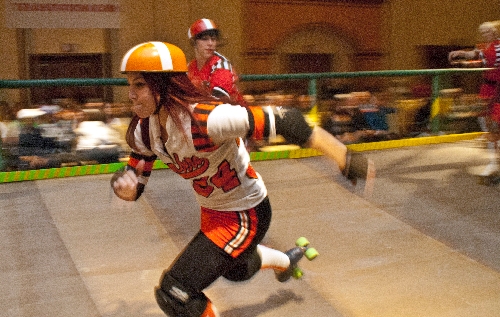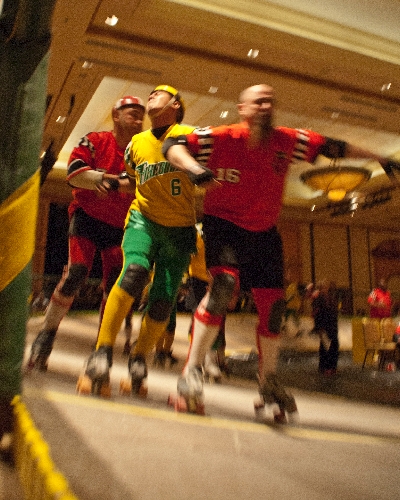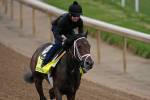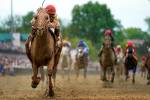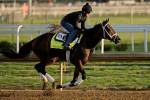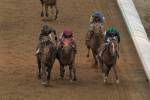Skaters, fans have roller derby in their blood
The roller derby track should be covered with blood.
Skaters should be bleeding profusely, lining up for plasma transfusions after the beatings handed out on the track during a professional roller derby game at Texas Station earlier this month.
Alas, there is no blood, much to 12-year-old Sophie Peterson's disappointment. This is her first time attending a professional roller derby game but she's no novice to the sport. She saw the movie "Whip It" a hundred times. It features Drew Barrymore, Ellen Page and a lot of blood.
"The movie looks more real than this," Peterson says.
Minutes after the ninth-grader says this, roller derby legend "Tricky" Vicki McEwen, 56, flips over the railing and falls in front of the announcer's table. She hits her head.
"She's bleeding," someone says.
Peterson, her sister, Hope, and their three friends are on their feet trying to get a look at McEwen as her teammates help her backstage, a television camera filming the dramatic exit.
This is what the girls came to see. And this is what Peterson hopes to be: a professional roller derby queen, covered in tattoos, skating around a banked track, blocking opponents into the crowd and enforcing her brand of derby justice.
When local Lali Outhoummountry, 51 , captain of San Francisco's Bay City Bombers, helped arrange this event in Las Vegas, she hoped to draw kids like Peterson. If professional roller derby is to be revived and reach the sort of popularity it enjoyed from the 1950s to the mid-1980s, kids have to get involved, says the woman known to fans as Lali O.
Outhoummountry is probably the only person in the world who bought her house -- on Hickam Avenue near Craig Road and Jones Boulevard -- because it accommodated her old-fashioned, banked roller derby track. She was bitten by some roller derby bug in childhood and has been on a lifelong quest to feed it. But flat track, which has gained a following in recent years, won't do; she has to have the kind of surface that thumbs its nose at gravity and adds just that much more danger to an already dangerous sport.
Since 2008, when Outhoummountry bought the track that had been featured in the movie "Charlie's Angels," she has become a local emissary for banked track derby, offering lessons to would-be skaters. Las Vegas has no professional teams, so she travels to California to skate.
To say she is passionate about the sport is like saying Michael Jordan was dedicated to basketball. Some people are born to lead countries, religious movements, political uprisings. Others are born to teach the world how to jam and block on roller skates. And how to flip over track railings.
The March 3 game, which showcases some of professional roller derby's legends, sells out about 400 seats at Texas Station. Organizers already are planning to return in a few months.
The climate is right for professional roller derby to take off again, says Georgia Hase, general manager of the Brooklyn Red Devils. Her team skated against two other teams: the Bay City Bombers and the Los Angeles Firebirds.
When Hase started in roller derby in the 1950s, athletes were paid to skate. It was a full-time job. Skaters could be traded to other teams, just like in other sports, and some became stars.
During the '70s, the sport was wildly popular. One game at Comiskey Park in Chicago drew 50,000 fans, says Gwen "Skinny Minnie" Miller, a teammate of Outhoummountry's.
Miller started playing for the L.A. Thunderbirds in 1969. She was skating when games were televised regularly.
Professional roller derby shared similarities with today's professional wrestling, which may have been behind its popularity, skaters say. There were "staged" fights, stunts in which skaters were thrown over railings and lots of melodrama from Hase, the referees, even the commentators. A television show, "Rock and Roller Games," featured a crazy track with an alligator pit in the center. With real alligators.
That over-the-top stuff was a necessary part of the game, Hase says, but the entertainment never took away from the real competition. Skaters were on the track to win. And even if some of the stunts were staged, that didn't prevent the broken ankles, cracked wrists, dislocated shoulders and busted noses that are a routine part of the game, she adds.
While no dangerous reptiles are at the Las Vegas game, there are plenty of fights. At one point, Miller, 60, throws an elbow and grapples with McEwen.
In the audience, Peterson rolls her eyes. She broke both wrists riding her skateboard, so she's no stranger to pain. The fights look set up. Someone should be bleeding, she says.
"Some of these women are too old to be doing this," Peterson says.
She has no idea that some of them have been doing this for 40 years.
After the game is over, Peterson, her sister and their friends grab their program books and tickets. They search for Outhoummountry, to get her autograph. The girls surround her and pose for photos.
Peterson grills her about lessons. She wants to skate roller derby, bad.
And when she does, there will be blood.
Contact reporter Sonya Padgett at spadgett@reviewjournal.com or 702-380-4564. Follow @StripSonya on Twitter.




